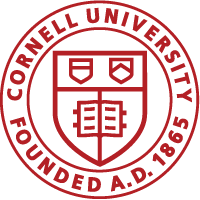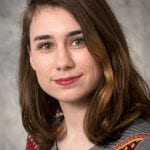Mentor: Holger Sondermann
Education:
University of Colorado, Colorado Springs – B.S. in Biochemistry, August 2013 – May 2017
Awards and Honors
- UCCS FAME (First-years achieving marks of excellence)
- UCCS President’s list second semester of freshman year and second semester of junior year
- UCCS Chancellor’s Scholarship
Research Experience:
- Undergraduate Research Assistant, Bultema Lab at University of Colorado, Colorado Springs, 2014-2017. Project: Antigen loading exosomes for cancer therapy
- Undergraduate Research Fellow, Hansen Lab at The Scripps Research Institute, Jupiter, Florida. Project: Characterizing potassium and calcium ion channels as targets for chronic pain.
Current Research Activities:
Bacterial biofilms have a substantial impact on industrial process and on human health, in particular in chronic infectious diseases. Cyclic di-nucleotides play an important role as second messengers in the process of biofilm formation. In Pseudomonas fluorescens, one of the targets of c-di-GMP signaling is the Lap system, a series of proteins comprised of a large adhesin protein (LapA), the pore (LapE) and associated proteins for LapA’s partial secretion (LapBC), a periplasmic protease for cleavage and release of the adhesin (LapG), and a transmembrane c-di-GMP receptor (LapD). LapD directly responds to increasing cytosolic c-di-GMP concentrations via sequestration of the protease LapG to its periplasmic domain, thus stabilizing the adhesin LapA in the outer membrane, which comprises the switch to a sessile lifestyle. Homologous systems are found in many species of bacteria, including many human pathogens. The goal of my research is to identify the molecular mechanisms that control biofilm formation via large adhesins, from the generation of c-di-GMP by diguanylate cyclases to the regulation of periplasmic proteolysis. A particular focus pertains to protein-protein interactions that appear to contribute to signaling specificity in a larger network of c-di-GMP effectors and enzyme for second-messenger turnover. Identifying mechanisms that are crucial for ensuring efficient and specific cell signaling may allow us to devise new approach to control biofilm formation in clinical and/or industrial settings.

